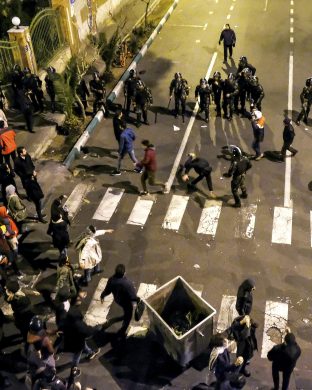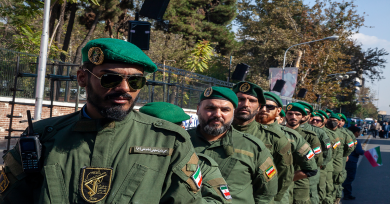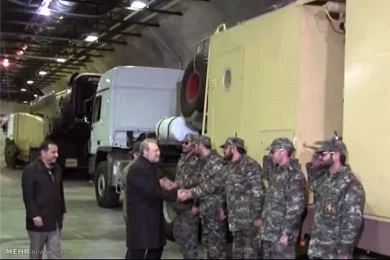For over four decades, women in Iran have lived under a regime that seeks to define their roles, dictate their choices, and silence their voices. But instead of submission, what has emerged is one of the world’s most powerful, persistent, and fearless women’s movements.
From the early days of quiet compliance, born out of fear and repression, to the blazing streets of protest chants and unveiled defiance, Iranian women have transformed resistance from a whisper into a roar. This is the story of that transformation — the evolution of women’s resistance in the Islamic Republic, from fear to fire.
1. 1979–1980s: The Seeds of Control and Silent Dissent
Mandatory Hijab and the First Protest
Shortly after the 1979 Islamic Revolution, the newly established Islamic Republic mandated compulsory hijab for all women. On March 8, 1979, thousands of women took to the streets in Tehran in protest. Their chants — “We didn’t have a revolution to go backwards!” — were some of the earliest public acts of dissent.
Though these protests were eventually quelled, they planted the seeds of a gendered resistance that would grow despite harsh repression.
The IRGC’s Rise and Gender Policing
As the Islamic Revolutionary Guard Corps (IRGC) solidified its power, it became a major enforcer of gender policies. The regime introduced:
• Morality patrols (Gasht-e Ershad)
• Gender segregation in schools and universities
• Severe penalties for unveiling, disobedience, or protest
Women retreated to private resistance—through poetry, coded art, underground activism, and education.
2. 1990s–2000s: Intellectual Resistance and Civil Society
A New Wave of Thought
The 1990s and early 2000s saw the emergence of reformist intellectuals and female voices in journalism, literature, and academia. Magazines and websites subtly addressed women’s rights under the guise of religious interpretation.
Notable Developments
• Nasrin Sotoudeh and other women lawyers began defending political prisoners and advocating for civil rights.
• Zanan Magazine, founded by Shahla Sherkat, became a voice for women’s issues until it was banned.
• Young women increasingly entered universities, outperforming men academically and developing critical consciousness.
Though the IRGC maintained pressure, a new generation of educated, outspoken women emerged — ready to shift from dialogue to confrontation.
3. 2009: The Green Movement and Women in the Frontlines
The 2009 presidential election sparked mass protests over alleged fraud, birthing the Green Movement. Women played a central role:
• Neda Agha-Soltan, whose death was caught on camera, became an icon of the movement.
• Women formed human chains, led chants, and documented abuses.
The IRGC responded with mass arrests, internet blackouts, and prison sentences for activists and journalists. Still, the fire of resistance was lit in a new generation.
4. 2010s: The Rise of Digital Defiance and Everyday Rebellion
Social Media as a Battleground
As IRGC surveillance grew, so did digital resistance. Women began using social media to:
• Document harassment by morality police
• Share images without hijab
• Coordinate flash protests
Key campaigns included:
• #MyStealthyFreedom by Masih Alinejad
• White Wednesdays, where women wore white scarves in protest
• Video blogs (vlogs) of women dancing, singing, and challenging social restrictions
The Price of Visibility
Women like Yasaman Aryani were arrested for handing out flowers unveiled on public transport. The IRGC made examples of these women with long prison sentences — but global support grew in response.
5. 2022: Mahsa Amini and the “Women, Life, Freedom” Movement
The death of 22-year-old Mahsa Amini in IRGC custody sparked unprecedented nationwide protests. What began as a protest against the compulsory hijab transformed into a full-scale feminist revolution.
Why This Moment Was Different
• Protests erupted in over 80 cities.
• Schoolgirls filmed themselves removing headscarves and confronting officials.
• Ethnic minority women, especially Kurds and Baloch, joined in large numbers.
• Men and families stood beside women, recognizing the struggle as national.
The slogan “Women, Life, Freedom” became a rallying cry — not just for gender equality, but for a complete transformation of Iranian society.
The IRGC responded with:
• Live ammunition, killing hundreds.
• Mass arrests, including journalists like Niloofar Hamedi.
• Torture, sexual abuse, and forced confessions in prisons.
Still, the movement endured — shifting the narrative of resistance in Iran permanently.
6. The Role of Prison and Exile in Strengthening Resistance
Many leading women activists were arrested, but even behind bars, their resistance continued.
In-Prison Leadership
• Narges Mohammadi continues to write and publish from Evin Prison.
• Letters and testimonies smuggled out of prison inspire movements inside and outside Iran.
Voices in Exile
• Exiled journalists like Masih Alinejad and Shirin Ebadi act as amplifiers of Iran’s women’s movement, bridging the gap between Iran and the global community.
• Online campaigns, digital activism, and diplomatic advocacy are led by the diaspora — much of it women-led.
7. The IRGC’s Evolving Repression — and Its Limits
The IRGC has evolved its tactics, moving from public intimidation to:
• Cyber surveillance and hacking
• Criminalizing online activity
• Targeted assassinations and abductions abroad
Yet, these efforts have not quelled resistance — only internationalized it.
The more the regime attempts to suppress, the stronger and more creative the resistance becomes.
8. From Fear to Fire: What Sets This Movement Apart
No More Asking for Permission
The current wave of resistance is not about reform. It’s about transformation. Iranian women are no longer asking — they are demanding:
• Full bodily autonomy
• Equal legal rights
• The end of IRGC impunity and gender apartheid
From Individual to Collective Power
The evolution has moved from:
• Private resistance → Public protest
• Individual acts of defiance → Collective movements
• Silence → Global amplification
9. What the Future Holds: Women as Architects of a Free Iran
Iranian women are now the face of the country’s democratic aspirations. Whether through:
• Street protests
• Global advocacy
• Digital campaigns
• Civil disobedience
They are leading a national reawakening.
In the future, Iranian women are expected to play central roles in:
• Post-authoritarian governance
• Justice and reconciliation processes
• Rebuilding institutions with gender equity at their core
10. Global Responsibility and Solidarity
How the World Can Support Iranian Women
• Amplify their voices on international platforms
• Sanction the IRGC for gender-based violence and political imprisonment
• Protect exiled activists and journalists
• Support initiatives providing VPNs, legal aid, mental health care, and secure communication tools
Iranian women have ignited a movement of global relevance — a fight against authoritarianism, gender apartheid, and systemic violence.
Conclusion: The Fire Will Not Die
What began in silence, shaped by fear, has become a raging fire that the regime cannot extinguish. Iranian women — students, workers, mothers, journalists, artists — have reclaimed their voices and redefined resistance.
Join Our Newsletter!
Stay informed with the latest updates, news, and ways to take action in the fight for justice and global security. Sign up now to get updates delivered straight to your inbox!





